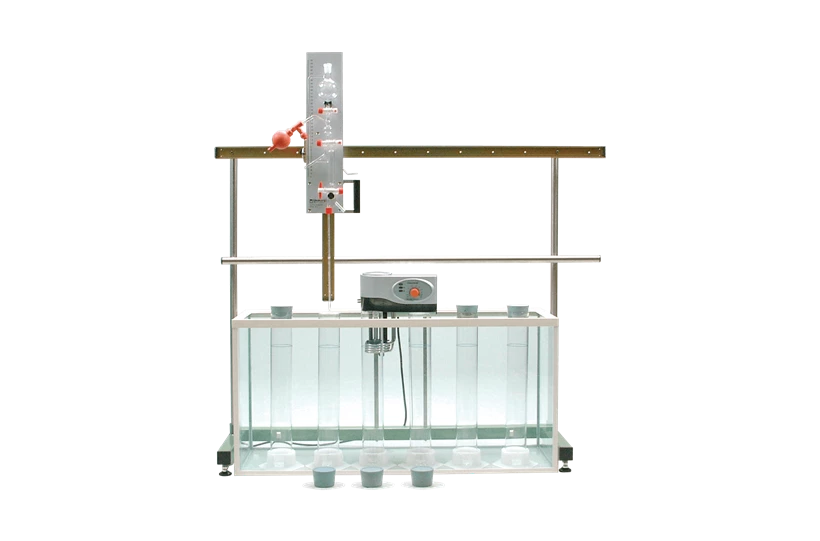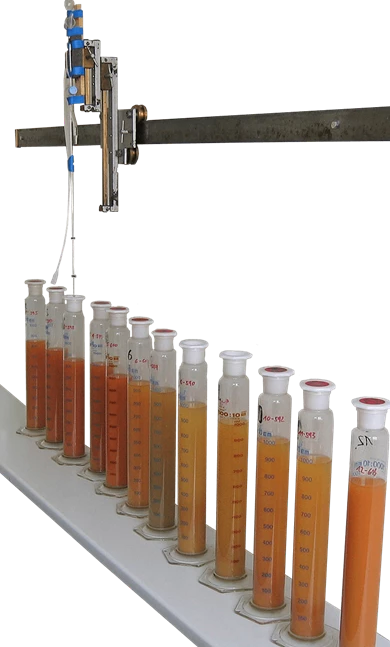

Laboratory device for determining the content of the fine fraction in soil.
The differences in soil properties are largely determined by the grain size distribution. Determination of the particle size distribution can be done by various methods, including sieving and pipetting. The pipette method is used to determine the finest fractions.
Applications
The pipette method
This method is based on the difference in sedimentation speed between small and large soil particles. Sedimentation of particles is the result of two opposing forces: gravity and friction, resulting from movement in a fluid medium.
First, carbonates, organic substances and possible iron oxide need to be removed because of their binding function. The sample is then suspended in water in a measuring cylinder and pipetted at different times and different depths, based on the Law of Stokes. The pipetted suspension is condensed and dried. Weighing determines the mass ratio of the pipetted fraction.
Table model 08.16.SA
This model can be placed on a laboratory table as an autonomous unit. Using the basic set, the fractions of 7 samples can be determined simultaneously. The standard set includes:
Wall model 08.16.SB
This model can be mounted to a wall and used to research samples in different tanks. Multiple wall models can be connected, to research many samples in multiple tanks. The standard set includes:
| Pipette apparatus | |
|---|---|
| Maximum number of samples | 7 |
| Sample specification | Disturbed |
| Measuring range | < 38 microns |
| Reading accuracy | Depending on weighing equipment |
| Voltage | 230 volt 50/60Hz |
| Power supply | Line voltage |
| Package dimensions | 120x80x100 cm |
| Weight | 75 kg |
| Filename |
|---|
| Manual 08.16 Pipette Apparatus |

Need advice choosing the right product for your application? Our specialist Michiel is happy to help.